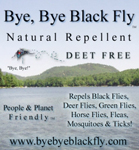Wrap up 2012 and Compare
With the growing season over and most of the needles have fallen off of the Hackmatacks, it’s interesting to look back and contemplate what happened. My garden was poor this year. I fell far behind right at the start and the poor garden sort of had to fend for itself. Veggie gardens usually don’t prosper under such circumstances, and the production showed. This wasn’t helped by and influx of rabbits and porcupines, who even ate the sunflower stalks, and the late blight (or wilt) on the tomatoes. I had similar problems with wilt last year, as did most gardeners that I talked to. Gardeners like to compare results. My cucumber production was terrible, as was the corn, squash, beets, potatoes and peas; bean, onion, pepper and radish production was so-so, and anything else was pretty non-descript. In regards to fruit, from what I noticed here in the Quoddy region the apple crop this year was poor although a friend remarked that he thought that the apple trees in Fundy National Park in New Brunswick were pretty productive. I have seen very few Mountain ash trees with red berries this year. The cranberries and crowberries at Western Head in Cutler were essentially non-existent, although a wild cranberry bog near Pembroke yielded several quarts of the tart fruit in less than an hour of slopping in the water. There are only a few small Lingonberries in our woods, and the bunchberries were worse than usual. The acorn crop is poor this year, and our Beech trees are descending into oblivion. I’m not sure what has happened to the beaked hazelnuts. There are a lot of healthy looking bushes around, but I have not found a productive one for many years.
The cones seem to have the biggest impact on the critters here in the Quoddy region. Last year people were calling me because they were concerned that there were few birds at their backyard birdfeeders, and had any sinister malevolence befallen their feathered friends. I really didn’t know positively, but I had guessed that since the cone crop was outstanding, the birds had ample sustenance in the forest without travelling to feeders. I suspect that the cone crop may have been only part of the reason, because not all common feeder birds like chickadees, nuthatches and blue jays, actively feed on cones. All birds are opportunists, however, and in the midst of plenty they might change their normal habits a bit. Certainly the red squirrels enjoyed the bounty and my barn had many piles of shucked cones on stairs, work benches, grinders, saws and chairs. I’m still uncovering caches of unshucked cones in corners and cans and drawers of bolts, nails and tools. But this year is very different. The cone crop is poor, and it is lean times for those critters that depend on cones for the major part of their calories. The birds and squirrels have returned to the backyard feeders with a vengeance and Walmart apparently is selling oodles of black oil sunflower seeds. Our Blue jays, Chickadees, Redbreasted Nuthatches and a few less common species are very busy at our feeders. There are increasing signs that the situation is not just local, as some of the scarcer irruptive species are appearing here. I’ve noticed a few Evening and Pine Grosbeaks checking out not only the feeders but also the rose hips and barberry bushes. It has been a good while since I last saw an Evening Grosbeak. Also 2012 was a good year for the bristly caterpillars like Woolly Bears and Hickory Tussock moths here in the Quoddy region, and the fuzzy cocoons of the latter seem to be under every pail or piece of wood outside. I don’t know what this portends for the future, but it will be interesting to see how it plays out.







My choke cherry trees were barren this year, very unusual. The birds usually feast on them.
I’ve had a female cardinal and female pine grosbeaks at the feeder this fall, very unusual and nice surprises. The redpolls are back and a few late-leaving grackles show up now and then. Odd year.